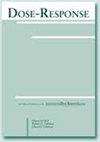粟粒穗的剂量依赖性分解、支气管扩张剂和降压活性。
IF 2.3
4区 医学
Q3 PHARMACOLOGY & PHARMACY
引用次数: 2
摘要
粟穗是一种有效的药用植物,在当地的医学体系中用于治疗各种疾病。然而,目前还没有全面的研究来解释它对胃肠道、呼吸系统和心血管系统疾病的有效性。本研究旨在验证小米穗在腹泻、哮喘和高血压中的民间使用的药理学基础。采用高效液相色谱法分析粟粒提取物中是否存在生物活性化合物。使用组织浴组件和Power Lab数据采集系统,将分离的兔空肠、气管和主动脉用于体外实验,以探索它们的相关影响。进行了抗腹泻活性的体内实验。HPLC分析显示存在没食子酸、丁基羟基甲苯、儿茶素和槲皮素。通过放松K+(低)诱导的具有解痉挛作用的收缩来观察浓度依赖性活性,EC50=.358±.052,支气管扩张剂(EC50=2.483±.05793)和血管舒张剂(EC50=.383±.063),这可能是由于ATP依赖性钾通道激活。通过预暴露格列本脲(特异性ATP依赖性K+通道阻滞剂)证实了这一点,格列本脲与色马卡林相似。Pm.Cr通过大鼠体内实验显示其具有止泻作用。本研究表明,粟粒具有止泻、解痉挛、支气管扩张和血管舒张活性,可能是由于ATP依赖性K+通道激活。本文章由计算机程序翻译,如有差异,请以英文原文为准。
Dose-dependent Spasmolytic, Bronchodilator, and Hypotensive Activities of Panicum miliaceum L.
Panicum miliaceum L. is a medicinally effective plant used in indigenous system of medicine for a variety of ailments. However, there is no comprehensive study explaining its effectiveness in gastrointestinal tract, respiratory, and cardiovascular system ailments. This study was designed to validate the pharmacological basis for the folkloric use of Panicum miliaceum L. in diarrhea, asthma, and hypertension. Panicum miliaceum extract was analyzed to detect the presence of bioactive compounds by HPLC. The isolated rabbit jejunum, trachea, and aorta were used for in vitro experiments using tissue bath assembly coupled with Power Lab data acquisition system to explore their relative effects. In-vivo experiments were performed for anti-diarrheal activity. HPLC analysis revealed the presence of gallic acid, butylated hydroxytoluene, catechin, and quercetin. Concentration dependent activities were observed by relaxing K+ (low) induced contractions having spasmolytic effect with EC50 = .358 ± .052, bronchodilator (EC50 = 2.483 ± .05793), and vasorelaxant (EC50 = .383 ± .063), probably due to the ATP dependent potassium channel activation. It was confirmed through pre-exposure of glibenclamide (specific ATP-dependent K+ channel blocker) having similarities with cromakalim. Pm.Cr revealed its antidiarrheal via in vivo experiments on rats. This study indicates that Panicum miliaceum has antidiarrheal, spasmolytic, bronchodilator, and vasorelaxant activities probably due to the ATP dependent K+ channel activation.
求助全文
通过发布文献求助,成功后即可免费获取论文全文。
去求助
来源期刊

Dose-Response
PHARMACOLOGY & PHARMACY-RADIOLOGY, NUCLEAR MEDICINE & MEDICAL IMAGING
CiteScore
4.90
自引率
4.00%
发文量
140
审稿时长
>12 weeks
期刊介绍:
Dose-Response is an open access peer-reviewed online journal publishing original findings and commentaries on the occurrence of dose-response relationships across a broad range of disciplines. Particular interest focuses on experimental evidence providing mechanistic understanding of nonlinear dose-response relationships.
 求助内容:
求助内容: 应助结果提醒方式:
应助结果提醒方式:


